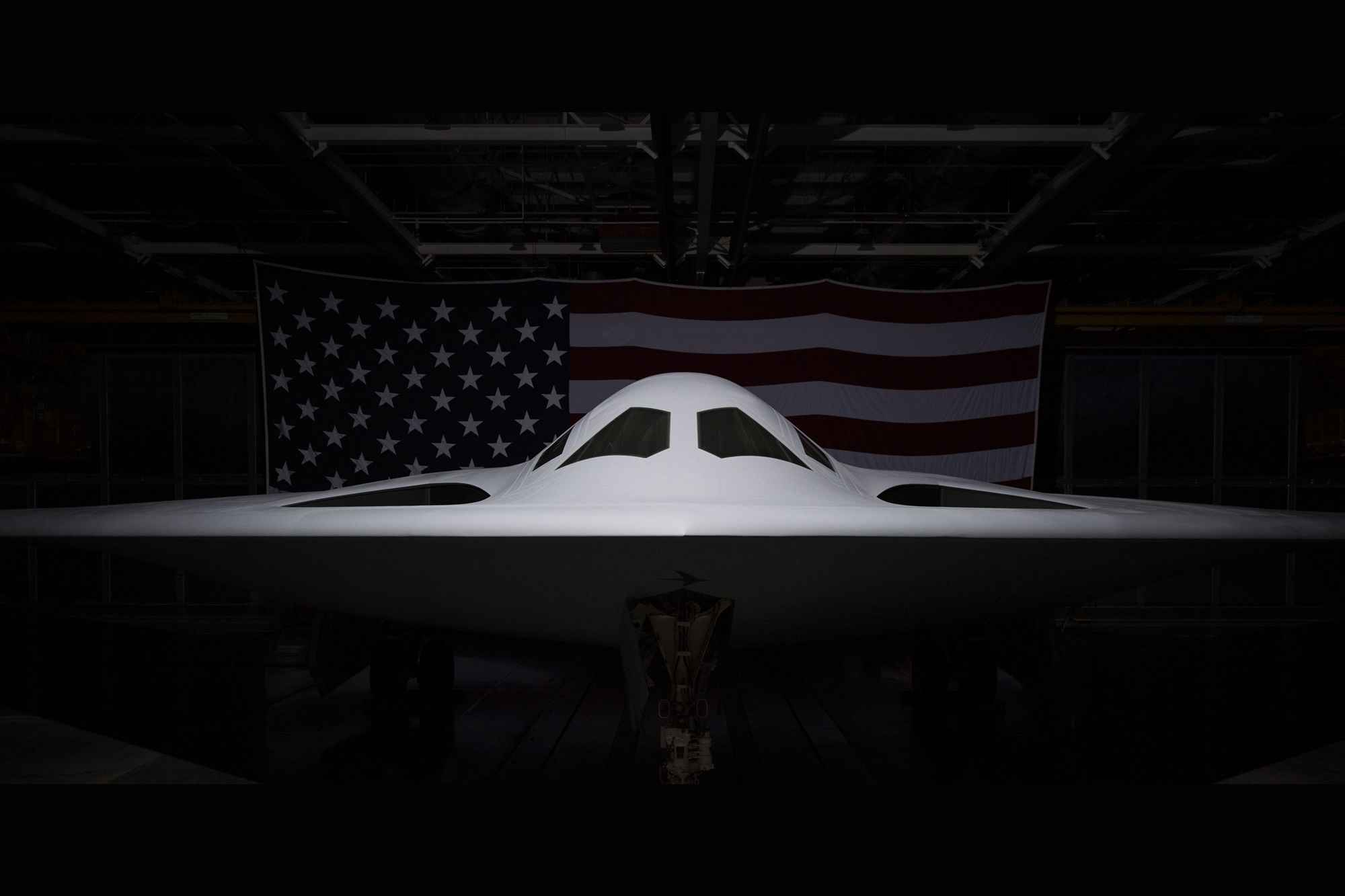
Marking its inaugural flight on November 10, 2023, the Raider stands as a testament to a new dawn in military aviation. As the first 21st-century bomber, the B-21 is a marvel of engineering. In an era where the stealth race between the United States and its rivals reaches new heights, the B-21 Raider emerges as a game-changer in aerial warfare.
In terms of its role and capabilities, the B-21 isn’t just another addition to the fleet; it’s the backbone of the future Air Force bomber force. The B-21 Raider’s stealth features embody advanced engineering, focusing on minimizing its radar and infrared signatures. Its design incorporates a secondary air intake on top of each nacelle, similar to the B-2, but with a notable difference: the B-21 likely has just one engine in each nacelle, inferred from the presence of a single intake door per nacelle. This twin-engine configuration is a strategic design choice for stealth optimization.
Perhaps one of the most striking distinctions lies in the physical dimensions of the B-21 compared to the B-2. The Raider’s smaller frame, with an estimated wingspan at least 15% shorter than the B-2’s 172 feet (52.5 meters), translates into a stealthier and more efficient aircraft. This size reduction, coupled with a payload capacity of about half of the B-2’s 60,000 pounds (27,000 kg), doesn’t diminish its lethality but rather enhances its stealth and range capabilities. This makes the B-21 harder to detect on radar, offering superior survivability and operational flexibility in contested airspaces.
The B-21’s design benefits from the lessons learned from the B-2, integrating advanced technologies and novel manufacturing techniques. The techniques honed during the B-2’s production have been refined and applied to the B-21, with some B-2 technicians even lending their expertise to the Raider’s production line. This knowledge transfer isn’t unidirectional; the B-21’s advancements have, in turn, been used to keep the B-2 relevant and formidable.
The B-21 Raider is expected to carry a broad array of sophisticated weapon systems. Its arsenal is anticipated to include the latest in precision-guided munitions, such as the Joint Direct Attack Munition (JDAM) series, which provides accurate, GPS-guided bombing options. Additionally, the Raider is likely to be compatible with the B61-12 nuclear bombs, ensuring its role as a key component in the U.S. nuclear triad.
The Raider benefits from cutting-edge radar-absorbent material (RAM) coatings, like those on the F-35, capable of absorbing up to 70–80% of inbound electromagnetic energy. Further bolstering the B-21’s edge is the integration of the AN/ASQ-239 system, an advanced electronic warfare suite that dramatically enhances its survivability and operational capabilities.
Lastly, the B-21 Raider’s design philosophy embraces the trend of modularity and upgradability in modern military aviation. Unlike previous systems, the B-21’s hardware and software are not inextricably linked, allowing for easier upgrades and expansions in capabilities.




